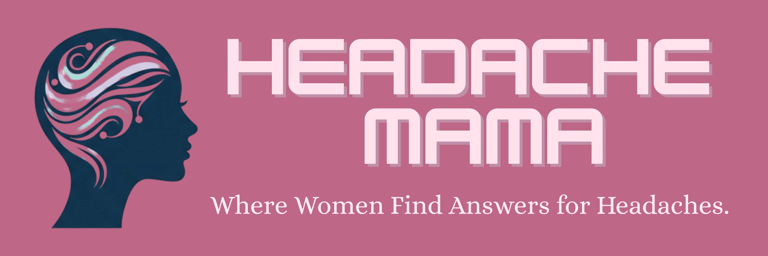Menstrual Migraine Relief: A Sufferer's Guide to Treatment & Hope
Struggling with debilitating migraines that sync with your menstrual cycle? You're not alone. Learn about the link between hormones and headaches, how to track your symptoms, and discover effective acute and preventive treatment options. This personal guide offers hope for managing menstrual migraines and reclaiming your life.
7/7/20253 min read


Another month, another migraine. If you’re reading this, you probably know exactly what I’m talking about. That tell-tale throbbing, the nausea, the desperate search for a dark, quiet room. For years, I thought I was just unlucky, that my migraines were random and cruel. But then I started tracking them, and a pattern emerged, a pattern that lined up perfectly with my menstrual cycle. That’s when I learned I wasn’t just a migraine sufferer; I was a menstrual migraine sufferer. And if you're in the same boat, I want you to know you're not alone.
What is a Menstrual Migraine?
So, what exactly is a menstrual migraine? It’s a type of migraine that’s directly linked to the hormonal fluctuations of our menstrual cycle. Specifically, it’s the drop in estrogen that happens right before our period that seems to be the main trigger. There are two main types:
Pure Menstrual Migraine: This is when you only get migraines during your period, usually in the 2 days before and the first 3 days of your period.
Menstrually-Related Migraine: This is when you get migraines during your period, but you also get them at other times of the month.
For many of us, these menstrual migraines are more severe, last longer, and are more resistant to treatment than migraines that happen at other times of the month.
Why Do We Get Them?
The main culprit behind menstrual migraines is that drop in estrogen I mentioned earlier. When our estrogen levels fall, it can cause a cascade of events in our brains, including a decrease in serotonin (the "feel-good" chemical) and an increase in substances that cause inflammation and pain. It’s like a perfect storm for a migraine.
Genetics can also play a role. If you have a family history of migraines, you might be more susceptible to them in general, including menstrual migraines.
How Do I Know It's a Menstrual Migraine?
If you suspect your migraines are linked to your cycle, the best thing you can do is start a headache diary. For a few months, track:
When your migraines happen
How severe they are
What other symptoms you have (nausea, sensitivity to light, etc.)
The dates of your menstrual cycle
This information will be invaluable when you talk to your doctor. To be diagnosed with a menstrual migraine, you’ll generally need to have migraines that occur in at least two out of three menstrual cycles, and that happen in the window from two days before your period to three days after it starts.
What Can We Do About It?
The good news is, there are ways to manage menstrual migraines. It might take some trial and error to find what works for you, but there are options:
Lifestyle Changes: Simple things can make a big difference. Think regular sleep, a healthy diet, staying hydrated, and managing stress.
Acute Treatment: These are the medications you take when a migraine strikes.
NSAIDs (Nonsteroidal Anti-Inflammatory Drugs): Things like ibuprofen and naproxen can be effective, especially if you take them at the first sign of a migraine.
Triptans: These are prescription medications that are specifically designed to treat migraines. They work by targeting the specific pathways in the brain that are involved in a migraine attack. Studies have shown that triptans can be very effective for menstrual migraines.
Remember always that we need to take medications at the first realization that we might be beginning to get a headache
Preventive Treatment: If you have frequent or severe menstrual migraines, your doctor might recommend preventive treatment.
Hormonal Options: For some women, hormonal birth control can help by stabilizing estrogen levels and preventing that big pre-period drop.
Mini-Preventive Therapy: If you have a regular cycle, you might be able to take a triptan or NSAID for a few days before and during your period to prevent migraines from starting.
Other Preventive Medications: There are also other medications, like certain antidepressants and blood pressure medications, that can be used to prevent migraines.
CGRP Inhibitors: These are a newer class of medications that are showing promise for both acute and preventive treatment of migraines.
A Word on Seeking Help
Living with menstrual migraines is tough, but you don’t have to do it alone. Talking to your doctor is the first step. Be open and honest about your symptoms and how they're affecting your life. It can also be helpful to work with a team of healthcare professionals, including your primary care doctor, a neurologist, and a gynecologist, to come up with a comprehensive treatment plan.
Remember, you are your own best advocate. Keep tracking your symptoms, ask questions, and don’t be afraid to speak up if a treatment isn’t working for you. There is hope, and there are options. We deserve to live a life that isn't dictated by our hormones.
References
Moy G, Gupta V. Menstrual-Related Headache. In: StatPearls [Internet]. Treasure Island (FL): StatPearls Publishing; 2025. Updated October 4, 2022. Accessed July 7, 2025. Available from: https://www.ncbi.nlm.nih.gov/books/NBK557451/
Ailani J, Lipton RB, Goadsby PJ, et al. Population-Based Characterization of Menstrual Migraine and Proposed Diagnostic Criteria. JAMA Network Open. 2023;6(5):e2312663. doi:10.1001/jamanetworkopen.2023.12663
Disclaimer
Content on HeadacheMama.com is for informational purposes only and is not a substitute for professional medical advice. Always consult your doctor.
contact@headachemama.com
© 2025. All rights reserved.
